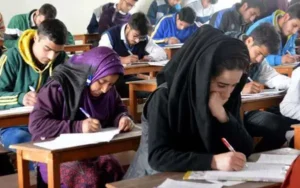Mating calls of endangered hangul in Kashmir indicate record uptick in population

Experts suggested the roars or calls made by hangul during rutting indicate that their number will cross 300 this spring, the first time in more than three decades

Kashmir’s highly shy and sensitive animal, hangul, which is enlisted as a critically endangered indigenous species of deer, has reported one of the healthiest rutting or mating seasons in the previous autumn. Experts suggested the roars or calls made by hangul during rutting indicate that their number will cross 300 this spring, the first time in more than three decades.
“The calls recorded by the wildlife staff during the rutting season in October last year were healthy compared to previous years. In fact, the Dachigam National Park, home to hangul, was closed between September 25 to October 18 for visitors to allow unhindered rutting,” Rashid Naqash, Regional Wildlife Warden, Kashmir, told The
These calls were recorded from around 25 nallah or drainages in middle and lower reaches of Dachigam National Park, spread over 141 square kilometres, in Srinagar.
A male deer roars and groans during courtship to attract a female deer or hind. The animals keep calling back and forth for half an hour or more, especially during dawn and dusk. Officials sighted a male deer with a larger group of hind and fawns (young deer), “as big as 15” in the autumn.
Since 1947, the population of hangul, which is the State animal of Jammu and Kashmir, witnessed a sharp decline. In 1947, around 2000 were spotted and the number fell to 384 by 1968.
In 1988, the hangul population was estimated to be around 1,000 and fell drastically to 140 to 160 in 1992, as militancy raged in Kashmir and the movement of large columns of security forces and also of militants increased in the area.
The hangul population was estimated at a mere 197 in 2004, touched the lowest of 183 in 2015 and showed a steady increase to 261 in 2021, according to Wildlife department figures.
“Multiple disturbances, including stress on forest areas and human intervention, did disturb the habitat of hangul. However, we are able to provide better environments now. We plan to secure all corridors, especially the Wangath-Naranag corridor in the north. We are coming up with a mechanism to ensure that the groups of hangul move safely on the highways in Ganderbal by regulating traffic,” Mr. Naqash said.
With 11-to-16-point antlers, the hangul is also facing a skewed male-female ratio. The official figure suggested there are 19.2 males per 100 females “which is much lower than the ideal ratios of 40-50 male per 100 females”.
Dr. Khursheed Ahmad, head of the Wildlife Sciences Faculty of Forestry at the Sher-i-Kashmir Agricultural and Science Technology-Kashmir, has identified a few threats that the hangul faces in the national park.
“Leopards and Asiatic Black Bears are the major predators in the area. Hangul formed a major proportion, about 25%, of the leopard diet at Dachigam. It needs more research,” Mr. Ahmad said.
He warned that most of the drainages in Dachigam were seen to be dried up throughout the year, probably due to the impact of global warming and the glacial areas of Upper Dachigam have been observed to be snowless even during the beginning of summer.
“Non-availability of water in the near vicinity might have forced the hangul, especially lactating females in summer, to move towards the disturbed habitats in and outside Dachigam. This might as well be acting as one of the factors for fawn mortality to predators or even sheep dogs,” Mr. Ahmad said.
The J&K Wildlife department has identified 10 hangul sites “to provide a protection mechanism to ensure sustenance”. A captive breeding of hangul has been set up at Shikargah Tral.
“Founder population for the breeding would be taken from Dachigam and modern reproductive biotechnologies or assisted reproductive techniques (ART) would be employed to augment the population,” Mr. Naqash said.
Radio-collaring of hanguls in 2013 and 2020 is proving pathbreaking for the conservation plans. Officials said it is because of radio-collaring they realised that adult males with full grown antlers and dominant males during the rutting season were not safe to capture. “The captive breeding will help in establishment of genome resource banking and embryo bank,” Mr. Naqash said.





